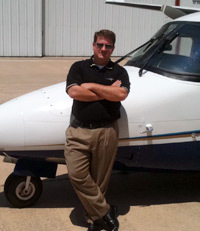By Matt Isley
First published in Flight Levels Online, Fall 2013 issue

The word “legacy” means different things, and leaves different impressions, depending on what it is describing. The dictionaries define “legacy” as money or property passed on to people or institutions by virtue of a will. That’s usually a good thing, especially if you are on the receiving end of such a legacy.
A “legacy system” uses out-of-date hardware or software. In other words, my old laptop. Not so good.
A “legacy airline” is one that was operating when the Airline Deregulation Act become law in 1978. In that context the word has either a positive or negative connotation depending on whether the airline in question is still operating –– and that list grows ever shorter –– and how it treats its passengers.
A common definition of a “legacy airplane” is a make and model that is no longer in production. That definition covers all Twin Commanders, of course. In fact, a vast majority of the general aviation fleet is comprised of “legacy” aircraft. So, does the “legacy” description enhance or detract from an airplane’s general reputation?
Depends.
Any owner, operator, or potential owner or operator of a legacy aircraft has to ask some basic questions to decide whether or not the legacy descriptor is a positive or a negative. Questions such as:
- Did the factory build the airplane to last?
- Who has possession of the type certificate now?
- What is their commitment to support?
- Are there shops and technicians with experience and knowledge in maintaining the aircraft?
- Is there a consistent, reliable supply of quality replacement parts available?
- Are there upgrades available to keep the aircraft at the leading edge of performance, mission capability, and safety?
- What does the market have to say about the airplane?
We at Twin Commander Aircraft strongly encourage our owners and operators, and anyone considering a Twin Commander, to ask those questions, because we are extremely confident of the answers.
As I’ve said many times, Twin Commander Aircraft exists for one simple purpose: to support the existing fleet. We don’t manufacture new airplanes, we keep the worldwide fleet of Twin Commanders airworthy and contemporary with replacement parts, upgrade kits, technical resources, and expert service. And when I say “we” I am including our global network of authorized service centers and other product and service partners. They are the independent businesses and trained and experienced people who work directly with you to make sure your Twin Commander is the best possible aircraft for your mission and standards.
The definition of “legacy” that I much prefer is one I read somewhere, offered by a perceptive individual whose name I can’t recall:
“I like to think that legacy is the last impression we make,” he wrote, “and is more important than our first impression.”
We –– Twin Commander Aircraft and our channel partners –– are proud of the Twin Commander’s legacy status. We work hard every day to live up to the lofty standard of making sure that your last impression of us is the best impression.

